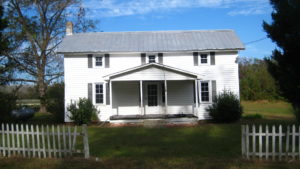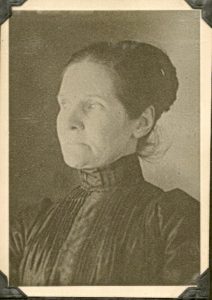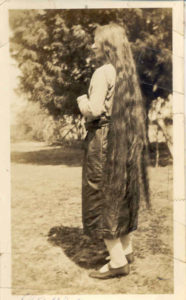AUTHOR: Bobby R. Spruill
Historians tell us that during the Civil War brother fought against brother and sometimes fathers and sons fought each other. That would not be the case of the three Foley brothers from the Skinnersville District of Washington County, North Carolina.
 John, Thomas, and Staten were the sons of John W. and Frances Wiley Foley, and were raised in a family that shared the same ideas and beliefs about their political convictions. John and Frances Foley both passed away before the beginning of the war. There seems to be no history or record of the Foley family name beyond the three brothers and their father John. It is believed that John W. Foley Sr. entered America via boat at Charleston in the early 1800s from Great Britain or Ireland. (Click on photos to enlarge.)
John, Thomas, and Staten were the sons of John W. and Frances Wiley Foley, and were raised in a family that shared the same ideas and beliefs about their political convictions. John and Frances Foley both passed away before the beginning of the war. There seems to be no history or record of the Foley family name beyond the three brothers and their father John. It is believed that John W. Foley Sr. entered America via boat at Charleston in the early 1800s from Great Britain or Ireland. (Click on photos to enlarge.)
North Carolina seceded from the Union May 20, 1861 and the following month, at the age of 24, Thomas W. Foley enlisted as sergeant in Co. G., 1st Regiment N.C. Infantry. At the rather young age of twenty-two, Thomas was the overseer on the farm of William J. Norman, who, according to the census of 1860, owned a substantial amount of property. Thomas was a born leader, and he went forward to answer the calling of his home state immediately when it needed him. Records show that Sergeant Thomas Foley made muster roll call several times before he died in the hospital at Richmond, Virginia July 20, 1862. I am not sure of the nature of Thomas’s death, but I believe he fought in some of the early engagements with North Carolina Company G., 1st Regiment, which later became the 17th Regiment. (Click on images to enlarge.)
On April 16, 1862 Thomas’s brothers, John W. and Staten W., enlisted as privates in Co G., 17th Regiment (2nd Organization) Washington County. They mustered into service at Camp Mangum by Lt. Col. Lamb. John was 26 years old and Staten was the youngest of the three brothers at 21 years old. It appears the three Foley brothers were serving at the same time for a period of three months prior to Thomas’s death in Richmond on July 20, 1862.
Company muster rolls and hospital muster rolls show John, the older of the brothers, to be in and out of different hospitals between engagements with the enemy until his death from pneumonia occurred while in the hospital at Goldsboro, N.C. on January 20, 1865.
One wonders by this time how Staten, the younger of the brothers, must have felt after almost three years of fighting and the loss of his two brothers. While retreating from Wilmington, during an engagement south of Kinston, N.C. at Wise’s Forks on the night of March 10, 1865, Pvt. Staten Foley was captured. He was taken to Point Lookout, Maryland and confined to prison there.
General Lee surrendered his army at Appomattox on April 9, 1865 and the President of the Confederacy Jefferson Davis was captured near Irwinville, Georgia in May.
On June 27, 1865 Staten W. Foley was released from Point Lookout Prison in Maryland after taking and signing the Oath of Allegiance to the United States of America. I am the great-grandson of Staten, the grandson of his daughter Frances and am pleased to own his original certificate of release as a prisoner of war given to me by great aunt Matilda Foley Whitfield. This certificate is approximately five by seven inches in size with the ends folded one third to the middle to allow it to fit in his shirt or coat pocket the same way it exists to this day.
This certificate in his pocket (possibly his only possession as proof of allegiance) assured him of a safe journey home to Skinnersville, North Carolina. Though happy to have survived, one can only imagine what these men thought as they crossed the many miles of scarred land to return to their communities.
As told by my grandmother (daughter of Staten), he arrived in Skinnersville late in the afternoon at the home and farm of George Wiley, relative of his mother Frances Wiley Foley. He slept that night in the barn because of his foul lice-laden condition created while in prison and adverse travel conditions on return home.
On Nov. 4, 1872 Staten married Zilphia Louisa Steeley in the Rehoboth Methodist Church in the Skinnersville Community. From this marriage would be born five children, Virginia, Frances (my grandmother), Thomas (after his brother), Laura, and Matilda.
Staten applied for a Confederate Soldiers Disability Pension May 1909 and received it with back pay to 1907 which was when the bill was originally ratified. He was examined at his home [the Foley place] by Doctor W. H. Hardison (Conf. vet.) and his application was approved by pension board member and neighbor William R. Chesson (Conf. Vet.).
 Staten Foley departed this life Sept. 28, 1915. He was buried on his farm in the Skinnersville Community with a military memorial at his grave which reads: Staten W. Foley, Co. G 17 N.C. INF C.S.A.
Staten Foley departed this life Sept. 28, 1915. He was buried on his farm in the Skinnersville Community with a military memorial at his grave which reads: Staten W. Foley, Co. G 17 N.C. INF C.S.A.







